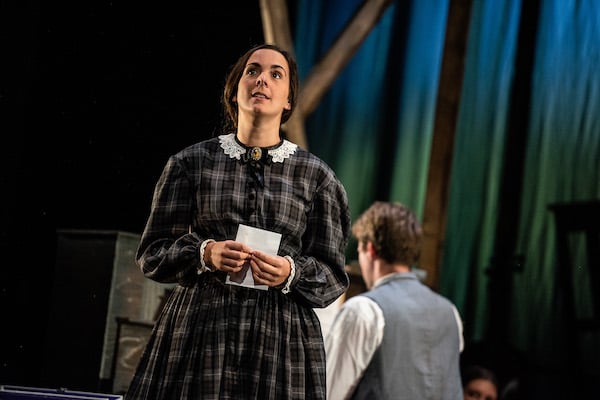1 December 2021
Arts, education and cultural capital
Spencer Rust
Publishing Executive, Digital Theatre+
Integrating arts and culture into education improves performance. Everyone knows that, right? Well, you don’t have to look far to find studies that prove it. As well as helping students to develop their soft skills, the arts are widely known to drive student attainment and progress.
It’s no wonder, then, that the word on everyone’s lips in education is cultural capital. Let’s talk about what cultural capital is and how you can bring it into your teaching.
We’ll start by taking a trip back to the 1970s. French sociologist Pierre Bourdieu theorised that cultural capital was a method through which the social classes could be maintained. Bourdieu’s theory was that cultural capital was accumulated by those who could afford access to high art/culture – trips to theatres, museums, galleries etc. – and therefore dictated your position in society. This theory helps us understand the divide between the low and high classes based on privilege, power and culture. It’s clear why cultural capital is a term synonymous with the bourgeoisie.
History lesson over, we’re now almost half a century on, and art largely remains available to the privileged few. Whilst this is the case in wider society, steps are being taken to ensure that appreciation of creativity, arts and culture remain a key part of the curriculum for everyone.
In 2019, Ofsted’s School Inspection Handbook detailed a section on cultural capital which reads as follows:
Inspectors will consider the extent to which schools are equipping pupils with the knowledge and cultural capital they need to succeed in life. Our understanding of ‘knowledge and cultural capital’ is derived from the following wording in the national curriculum:
It is the essential knowledge that pupils need to be educated citizens, introducing them to the best that has been thought and said and helping to engender an appreciation of human creativity and achievement.
Hotly contested, this standard relies on providing an experience to students that allows them to become ‘educated citizens’, based on their ability to appreciate ‘creativity and achievement’.
That’s all well and good, but how can this be implemented by you in your school? The answer to this begins at a macro-level, with school-wide decisions. Equipping students with cultural capital begins with developing a more varied curriculum that is learner-focused and offers students the key skills they’ll need for their later life.
We can, of course, support students in the development of cultural capital on a micro-level too. Let’s go through some practical examples of how to bring this into your classroom.
Access to the arts
An appreciation of creativity can come from experiencing the arts directly, whether that’s through a school trip or access to an online resource like Digital Theatre+.
Giving students opportunities to be creative in lessons is key. From practical activities to group work, developing a range of ways to take part helps to engage a wider range of learners.
Diversity
Diversity of perspective is also paramount, ensuring that students have a wide variety of stories that are representative of their lived experiences and that of others.
.jpg?width=600&name=Beautiful%20thing%20(1).jpg) Beautiful Thing © Michael Lidbetter
Beautiful Thing © Michael Lidbetter
We have a huge variety of productions and supporting content that examines a multiplicity of stories and experiences on Digital Theatre+ that would be great for starting these conversations in the classroom.
Cross-curricular links
Making connections between the topics on the curriculum for different subjects is a great way to give students a wider context to what they’re studying.
As an example, it might be useful during a unit of study on Charlotte Brontë’s Jane Eyre in English to demonstrate how her characters could be dramatised by showing students one of the three adaptations of this classic text on Digital Theatre+.
 Jane Eyre | Black Eyed Theatre © Alex Harvey-Brown
Jane Eyre | Black Eyed Theatre © Alex Harvey-Brown
Careers
Progression from school to work requires students to know the careers available to them. Across the curriculum but especially in the arts where it’s easy for students to believe that acting is the only route to success, it’s critical that students are shown the myriad of opportunities in the industry.
In practice, you could point students in the direction of resources like the guides to Careers in Acting and Stage Management, the Production Roles chart or Theatre Lives interview series on Digital Theatre+.
.png?width=600&name=Untitled%20design%20(37).png) Theatre Lives: Adrian Lester
Theatre Lives: Adrian Lester
Extra-curricular
As well as working to improve the curriculum you teach, running extra-curricular activities can help students develop the appreciation of creativity that is so key to cultural capital.
From creative writing to book clubs, running activities that students can be part of outside the school day is important. You could even stream a production on Digital Theatre+ for a theatre club, bringing a show directly into your school hall!
Cultural capital wasn’t developed overnight, and it’s only a result of historical disparity that it’s so crucial we focus on it today. Educators like you have a vital role to play in creating a holistic curriculum that allows students to develop their cultural capital and go into the world as educated citizens.
Regardless of your subject area, we hope that these practical techniques are useful, and encourage you to think about how you can develop the cultural capital of the students you teach.
If you are not currently a customer of Digital Theatre+, and would like to access any of the resources mentioned, plus further tools to help you increase cultural capital in your school, get in touch with a member of our team today.
Further reading
Related blogs
The key 21st Century Skills to help students thrive
21st Century Skills. Future Readiness. Life Skills. Global Citizenship. The Four Cs. Higher Order...
Read moreCore Skills: Development and Assessment
The first step to creating a rigorous and relevant curriculum is to determine the knowledge and...
Read more5 silly icebreakers for Theatre & Performance students
As we step into the theatre classroom, what could be better for getting going than some playful fun...
Read moreGet the latest teaching tips straight to your inbox
Explore free lesson ideas and inspiration, education news, teaching trends and much more by signing up to regular blog updates!





%20(33).png)